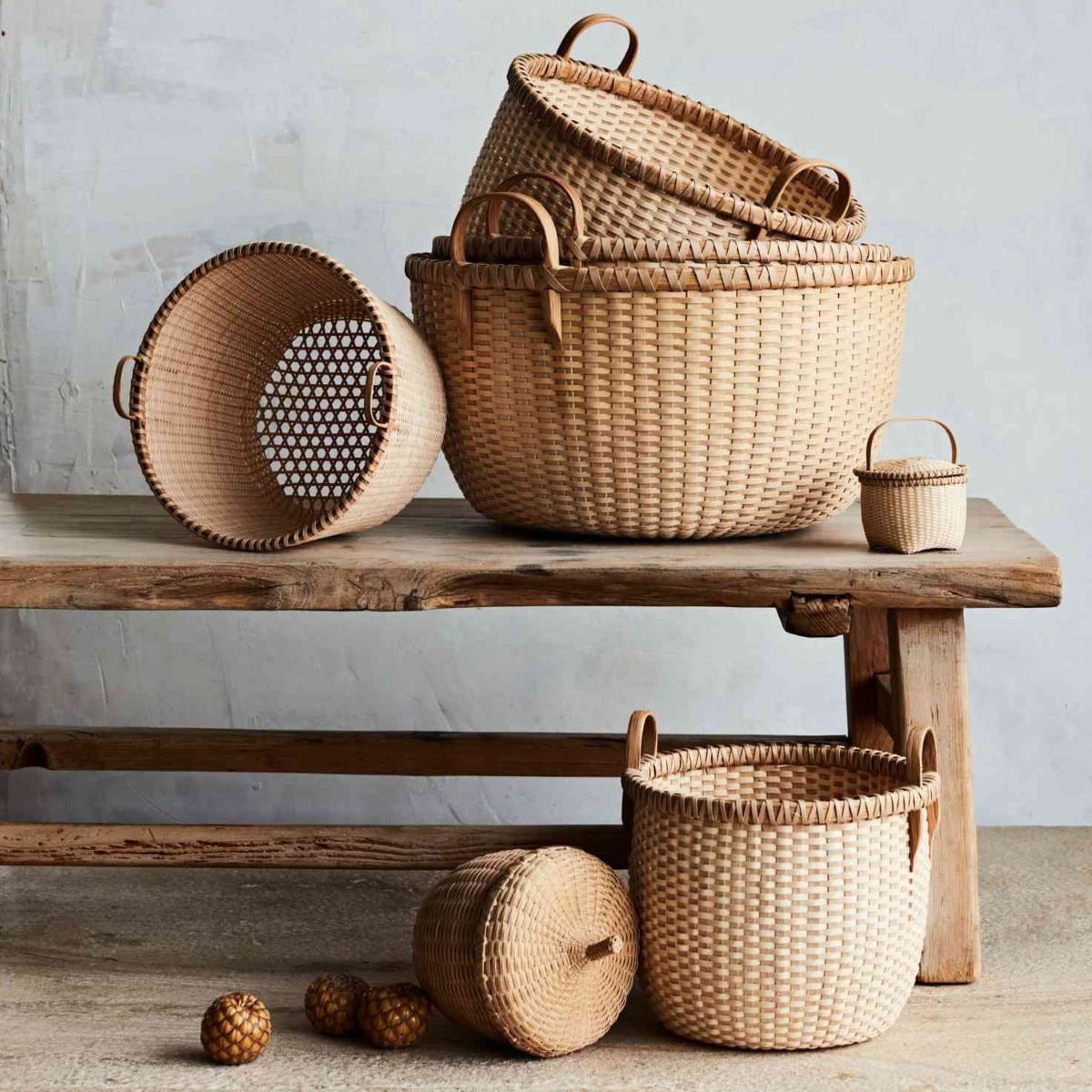

Articles
How To Store Baskets
Modified: January 23, 2024
Learn the best techniques for storing your articles and keeping them organized with our helpful guide on how to store baskets.
(Many of the links in this article redirect to a specific reviewed product. Your purchase of these products through affiliate links helps to generate commission for Storables.com, at no extra cost. Learn more)
Introduction:
When it comes to home organization and storage solutions, baskets have always been a popular choice. They not only provide a stylish and practical way to declutter your space but also add a touch of charm to any room. Whether you use them to store blankets, toys, or even pantry items, proper basket storage is essential to ensure their longevity and keep them looking their best.
In this article, we will explore the importance of storing baskets correctly, the different types of baskets, and provide you with valuable tips and techniques to organize and maintain your baskets efficiently. So, if you’re ready to discover how to keep your baskets in top condition and make the most of your storage space, read on!
Key Takeaways:
- Preserve the beauty and functionality of your baskets by selecting the right storage location, cleaning and preparing them, and organizing for easy access. Avoid common storage mistakes and prioritize regular maintenance to ensure longevity.
- Understanding the unique characteristics of each basket type is crucial for proper storage. Utilize protective coverings, maintain a dry environment, and implement effective organization to keep your baskets in optimal condition.
Read more: What To Store In Baskets
Why is Proper Basket Storage Important?
Proper basket storage is essential for several reasons. First and foremost, it helps to preserve the quality and condition of the baskets themselves. Baskets are often made from natural materials such as wicker, seagrass, or rattan, and improper storage can lead to damage or deterioration over time.
By storing your baskets correctly, you can prevent them from becoming misshapen, warped, or faded. This is particularly important if you have invested in handmade or vintage baskets that hold sentimental or monetary value. Proper storage will help maintain their beauty and integrity, ensuring that they can be enjoyed for years to come.
Additionally, storing baskets properly makes it easier to keep your home organized and clutter-free. With the right storage system in place, you can easily find and access the items you’ve stored in your baskets, saving you time and frustration. This is especially important if you use baskets to store frequently used items like toiletries, crafting supplies, or remote controls.
Not only does proper storage allow for easy access, but it also helps to protect the items within the baskets. For example, if you use baskets to store delicate fabrics or fragile decor pieces, proper storage can prevent them from getting snagged, crushed, or broken.
Lastly, proper basket storage contributes to the overall aesthetics of your space. Baskets can be a stylish and decorative element in your home, adding texture and visual interest. By storing your baskets in an organized and visually pleasing manner, you can enhance the overall look and feel of your space.
Now that we understand the importance of proper basket storage, let’s delve into the different types of baskets available and how to choose the right storage location for them.
Types of Baskets:
Baskets come in a wide variety of styles, materials, and sizes, each with its own unique characteristics and purposes. Understanding the different types of baskets will help you determine the most suitable storage method for each type.
1. Wicker Baskets: Wicker baskets are perhaps the most common type of basket. They are woven from natural materials like willow, rattan, or bamboo, giving them a rustic and organic look. Wicker baskets are versatile and can be used for a variety of purposes, such as storing linens, toys, or even serving as decorative pieces.
2. Seagrass Baskets: Seagrass baskets are made from a plant material harvested from coastal areas. They are known for their durability and flexibility, making them ideal for storing lightweight items or for use as plant holders. Seagrass baskets add a touch of natural texture to any space and are often used in bohemian or coastal-inspired interiors.
3. Wire Baskets: Wire baskets are made from metal wires that are woven or welded together. They have an industrial and modern aesthetic and are great for storing items that require ventilation, such as fruits and vegetables in the kitchen or towels in the bathroom.
4. Fabric Baskets: Fabric baskets, as the name suggests, are made from various fabrics such as cotton, canvas, or linen. They are soft and pliable, making them a popular choice for organizing small items, such as accessories, craft supplies, or baby essentials. Fabric baskets often come with handles or compartments for easy organization.
5. Decorative Baskets: Decorative baskets are usually made from a combination of materials, such as wood, metal, or leather. They are designed to be visually appealing and may feature intricate patterns, embroidery, or embellishments. Decorative baskets are commonly used for displaying items like dried flowers, magazines, or simply as statement pieces on a shelf or coffee table.
Understanding the different types of baskets will help you determine the most appropriate storage method and materials for each type. Now, let’s move on to selecting the right storage location for your baskets.
Selecting the Right Storage Location:
Choosing the right storage location for your baskets is crucial to ensure their preservation and accessibility. Here are some factors to consider when selecting the ideal storage spot:
1. Avoid Direct Sunlight: Exposure to direct sunlight can cause fading and deterioration of natural materials. Therefore, it’s important to choose a storage location away from windows or other areas with excessive sunlight. Consider placing your baskets in a closet, pantry, or under a shelf.
2. Temperature and Humidity: Baskets are sensitive to changes in temperature and humidity. It’s best to store them in a cool and dry environment to prevent warping, mold, or mildew. Avoid storing baskets in basements, attics, or areas prone to high humidity levels.
3. Accessibility: Consider where and how often you will need to access your baskets. If you frequently use certain baskets for organizing daily essentials, such as in the bathroom or kitchen, store them in easily accessible locations, such as open shelves or cabinets.
4. Weight Capacity: Take into account the weight capacity of the storage area. Some baskets may become heavy when filled with items. Ensure that the storage location can safely support the weight of the baskets to prevent any accidents or damage.
5. Space Considerations: Evaluate the available space in your home to determine the most suitable storage solution. Utilize vertical space by installing shelves or wall-mounted hooks to maximize storage efficiency. Consider using under-bed storage containers or over-door organizers for small or lightweight baskets.
6. Consider the Purpose: Think about the purpose of your baskets and select a storage location accordingly. For example, if you use baskets to store children’s toys, keep them in a designated playroom or living area for easy access and cleanup.
By considering these factors, you can select the right storage location that ensures the longevity of your baskets while maintaining a clutter-free and organized home. Next, we’ll explore how to clean and prepare your baskets before storing them.
Cleaning and Preparing Baskets for Storage:
Before storing your baskets, it is important to clean and prepare them properly to prevent any dirt, dust, or debris from compromising their condition. Follow these steps to clean and prepare your baskets for storage:
1. Empty and Sort: Empty the contents of your baskets and sort them into categories based on their purpose or type. This will make it easier to clean and organize them later on.
2. Dust and Vacuum: Use a soft brush or a cloth to gently remove any dust or dirt from the surface of the baskets. Be thorough, making sure to reach all the crevices and corners. If the baskets have intricate patterns or weaves, you can use a vacuum cleaner with a brush attachment to remove the dust more effectively.
3. Spot Clean: If your baskets have stains or spots, spot clean them using a mild mixture of water and gentle soap. Dip a clean cloth or sponge into the soapy water and gently dab at the stained areas. Avoid soaking the baskets in water, as this can weaken the natural fibers.
4. Dry Thoroughly: After spot cleaning, allow the baskets to air dry completely. Place them in a well-ventilated area away from direct sunlight and heat sources. Ensure they are completely dry before proceeding to the next step.
5. Apply a Protective Finish (Optional): Depending on the type of baskets and their intended use, you may consider applying a protective finish to help prevent damage and extend their lifespan. For example, you can use a clear varnish or sealer on wicker or seagrass baskets to add a layer of protection against moisture and dust.
6. Pack with Acid-Free Tissue Paper: To further protect your baskets during storage, line them with acid-free tissue paper. This will prevent any potential discoloration or transfer of color between the baskets.
7. Group and Label: Group similar baskets together and label them accordingly. This will make it easier to locate specific baskets when you need them in the future.
By following these steps, you can ensure that your baskets are clean, prepared, and ready to be stored properly. In the next section, we will explore the importance of storing baskets in a dry environment.
Read more: How To Store Laundry Baskets
Storing Baskets in a Dry Environment:
Proper storage of baskets in a dry environment is crucial to prevent moisture-related damage such as mold, mildew, and warping. Here are some tips to ensure that your baskets are stored in a dry and suitable location:
1. Choose a Dry Space: Select a storage area that is free from excessive moisture. Avoid areas like basements or damp closets. Instead, opt for dry rooms with good ventilation, such as closets in the main living areas of your home.
2. Use Climate-Controlled Storage: If you live in an area with high humidity levels, consider storing your baskets in a climate-controlled storage space. These spaces regulate temperature and humidity, providing an optimal environment for preserving delicate materials.
3. Elevate from the Floor: When storing your baskets, elevate them from the floor to prevent any potential moisture seepage. Use sturdy shelves, storage racks, or pallets to keep them off the ground.
4. Silica Gel Packs: Place silica gel packs or moisture-absorbing packets in each storage container or shelf where your baskets are stored. These packets help absorb excess moisture, keeping the environment dry and preventing mold or mildew growth.
5. Avoid Plastic Containers: While plastic containers may seem like a suitable storage option, they can trap moisture and lead to condensation, which can damage your baskets. Instead, opt for breathable storage solutions like woven baskets or fabric storage bins.
6. Check Regularly: Periodically check on your stored baskets to ensure that there is no moisture buildup or any signs of damage. If you notice any issues, take necessary steps to address them immediately.
Remember that keeping your baskets in a dry environment not only prolongs their lifespan but also maintains their structural integrity. By incorporating these practices, you can preserve the beauty and functionality of your baskets. In the next section, we will explore the use of protective coverings for added protection during storage.
Store baskets in a dry, well-ventilated area to prevent mold and mildew. Keep them away from direct sunlight to avoid fading. Stack them neatly to save space.
Using Protective Coverings:
When storing baskets, it is important to consider using protective coverings to shield them from dust, sunlight, and potential damage. Here are some effective ways to protect your baskets during storage:
1. Cotton Dust Covers: Cover your baskets with cotton dust covers to prevent dust and debris from settling on the surface. Cotton is a breathable material that allows air circulation, which is crucial for maintaining the condition of your baskets.
2. Plastic Wrap: For added protection against moisture, you can wrap your baskets with plastic wrap before placing them in storage containers or shelves. Make sure the baskets are completely dry before wrapping to avoid trapping any moisture inside.
3. Pillowcases or Fabric Bags: Use pillowcases or fabric bags to individually cover delicate or decorative baskets. This provides extra protection against scratches or accidental damage when stacking or handling.
4. Bubble Wrap or Foam Sheets: For fragile or intricate baskets, wrap them in bubble wrap or foam sheets before storage. This cushioning material helps protect the baskets from impacts during transportation or while in storage.
5. UV-Protective Film: If your storage area has exposure to natural light, consider applying UV-protective film to windows or glass doors. This film filters out harmful ultraviolet rays, preventing fading and damage to the baskets.
6. Acid-Free Tissue Paper: For baskets with intricate weaves or delicate surfaces, place acid-free tissue paper between layers to prevent them from rubbing or scratching against each other. This is especially important for preserving their aesthetic appeal.
Remember to label your covered baskets or use clear storage containers for easy identification. This way, you can easily locate specific baskets when needed without having to remove the coverings unnecessarily.
By utilizing protective coverings, you can safeguard your baskets from dust, light, and potential damage, ensuring their longevity and visual appeal. In the next section, we will discuss how to organize your baskets for easy access.
Organizing Baskets for Easy Access:
Proper organization of your baskets not only enhances the efficiency of your storage space but also ensures easy access to the items stored within them. Here are some tips for organizing your baskets effectively:
1. Categorize and Group: Sort your baskets based on their contents or purpose. Categorize them into groups such as kitchen essentials, bathroom supplies, or children’s toys. This will make it easier to locate specific items when needed.
2. Labeling: Attach labels or tags to each basket indicating its contents. This helps to quickly identify the basket without having to open or search through multiple ones. Use a label maker or adhesive tags for a neat and organized look.
3. Utilize Shelving Units: Invest in sturdy shelving units or storage racks to maximize vertical space. Place your baskets on the shelves in an organized manner, with frequently used items easily accessible at eye level and less frequently used items on higher or lower shelves.
4. Stackable Baskets: If you have limited space, consider using stackable baskets. These baskets can be stacked on top of one another to utilize vertical space efficiently. Ensure that the baskets are sturdy and secure in their stacking arrangement to prevent any accidents.
5. Underbed Storage: Utilize the space under your bed by using low-profile baskets for storage. This is ideal for seasonal items or infrequently used items that are not required on a regular basis. Opt for baskets with handles for easy retrieval.
6. Open Shelving: If you have decorative or visually appealing baskets, consider using open shelving to showcase them as part of your home décor. Arrange the baskets in a visually pleasing manner, alternating different sizes and shapes for an aesthetically pleasing display.
7. Hanging Baskets: For small items or frequently used supplies, hanging baskets can be a great solution. Install hooks or a pegboard on the wall and hang the baskets for easy access and efficient use of space.
Remember to regularly declutter and reorganize your baskets as your needs change. This will help maintain an organized storage system and ensure that items are easily accessible when required.
Now that you have organized your baskets for easy access, we will discuss common storage mistakes to avoid in the next section.
Avoiding Common Storage Mistakes:
When it comes to storing baskets, there are some common mistakes that can compromise their condition and overall storage efficiency. Here are a few pitfalls to avoid:
1. Overstuffing: Avoid overstuffing your baskets as it can lead to warping, misshaping, or damaging the basket handles. Be mindful of the weight capacity of each basket and distribute the contents evenly to maintain their structural integrity.
2. Ignoring Cleaning: Neglecting to clean your baskets before storage can result in the accumulation of dirt, dust, or even pests. Make sure to thoroughly clean and dry your baskets before storing them to keep them in the best possible condition.
3. Lack of Organization: Failing to organize your baskets can lead to a chaotic storage space and make it difficult to find specific items when needed. Take the time to categorize, label, and arrange your baskets in a logical and systematic manner.
4. Improper Handling: Rough handling of baskets during storage can lead to accidental damage. Treat your baskets with care, avoiding any excessive force, drops, or impacts that could cause cracks or breakages.
5. Inadequate Protection: Failing to use protective coverings such as dust covers, plastic wrap, or cushioning materials can leave your baskets vulnerable to damage from elements such as dust, sunlight, or moisture. Invest in appropriate protective coverings to maintain the longevity of your baskets.
6. Poor Selection of Storage Location: Choosing an unsuitable storage location can expose your baskets to excessive moisture, sunlight, or temperature fluctuations. Select a dry and well-ventilated area away from direct sunlight and extreme temperature changes.
7. Neglecting Regular Maintenance: Once your baskets are in storage, it’s important to check on them periodically to ensure their integrity. Tend to any cleaning, repairs, or adjustments as needed to keep your baskets in optimal condition.
By avoiding these common storage mistakes, you can ensure that your baskets remain in excellent condition and that your storage space is organized and efficient. In the next section, we will discuss how to maintain your baskets during storage.
Read more: How To Store Easter Baskets
Maintaining Baskets during Storage:
Proper maintenance of your baskets during storage is crucial to ensure their longevity and keep them in excellent condition. Here are some important tips to help you maintain your baskets:
1. Regular Inspection: Periodically inspect your baskets for any signs of damage, mold, or pests. Catching any issues early on can help prevent further deterioration and allow you to take appropriate action.
2. Ventilation: Ensure that your storage area has good ventilation to prevent the buildup of stagnant air, which can contribute to mold or mildew growth. Allow for airflow by leaving small gaps between your baskets or using ventilated storage containers.
3. Avoid Heavy Objects: Avoid placing heavy objects on top of your stored baskets. Excessive weight can cause deformation or compression, damaging the natural structure of the basket fibers.
4. Pest Prevention: Keep an eye out for any signs of pests such as insects or rodents. Place cedar balls, lavender sachets, or pest repellents near your baskets to deter unwanted critters.
5. Temperature Control: If possible, maintain a stable temperature within your storage area. Extremes of hot or cold can cause the baskets to expand or contract, potentially leading to damage.
6. Adjustments as Needed: If you notice any misshaping or warping in your baskets, gently reshape them by hand. Be cautious and avoid applying excessive force, as this can further damage fragile baskets.
7. Keep Them Dry: Regularly check for any signs of moisture or dampness and address them immediately. Wipe away any moisture or use desiccant packs to absorb excess humidity in the storage area.
8. Rotate and Use: If you have a collection of baskets, it is beneficial to rotate them and use different baskets periodically. This helps prevent any one basket from being in storage for too long, reducing the risk of damage from prolonged inactivity.
By following these maintenance tips, you can ensure that your baskets stay in top condition and can be enjoyed for years to come. In the final section, we will conclude our article on proper basket storage.
Conclusion:
Baskets are not only functional storage solutions but also add a touch of charm and organization to any space. Proper storage and maintenance are essential to preserve the beauty and condition of your baskets. By following the tips and techniques discussed in this article, you can ensure that your baskets remain in excellent condition and are easily accessible when needed.
Start by selecting the right storage location, considering factors such as sunlight exposure, temperature, and accessibility. Clean and prepare your baskets before storage, removing any dust or stains and ensuring they are completely dry. Store them in a dry environment, protect them with coverings, and organize them effectively for easy access.
Avoid common storage mistakes such as overstuffing, neglecting cleaning, and poor handling. Instead, prioritize proper organization, protection, and regular maintenance. With the right storage methods in place, your baskets will stay in optimal condition, adding functionality and aesthetic appeal to your home for years to come.
Remember that each type of basket requires specific care, so understanding their unique characteristics and materials is important. By taking these steps and implementing proper storage techniques, you can enjoy the beauty and functionality of your baskets while keeping your space organized and clutter-free.
Thank you for reading this comprehensive guide on how to store baskets. We hope you’ve found the information valuable and inspiring. Happy organizing!
Frequently Asked Questions about How To Store Baskets
Was this page helpful?
At Storables.com, we guarantee accurate and reliable information. Our content, validated by Expert Board Contributors, is crafted following stringent Editorial Policies. We're committed to providing you with well-researched, expert-backed insights for all your informational needs.
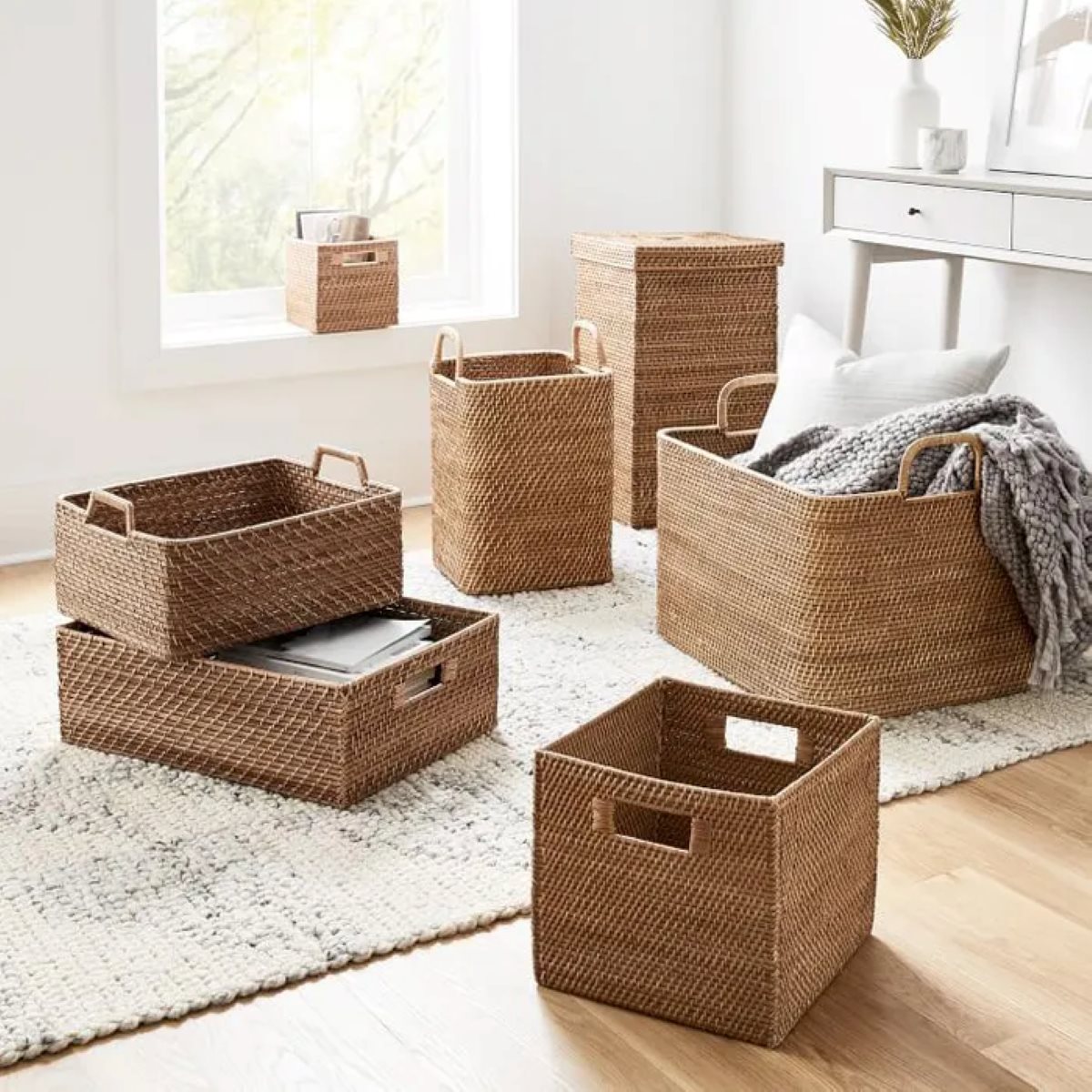

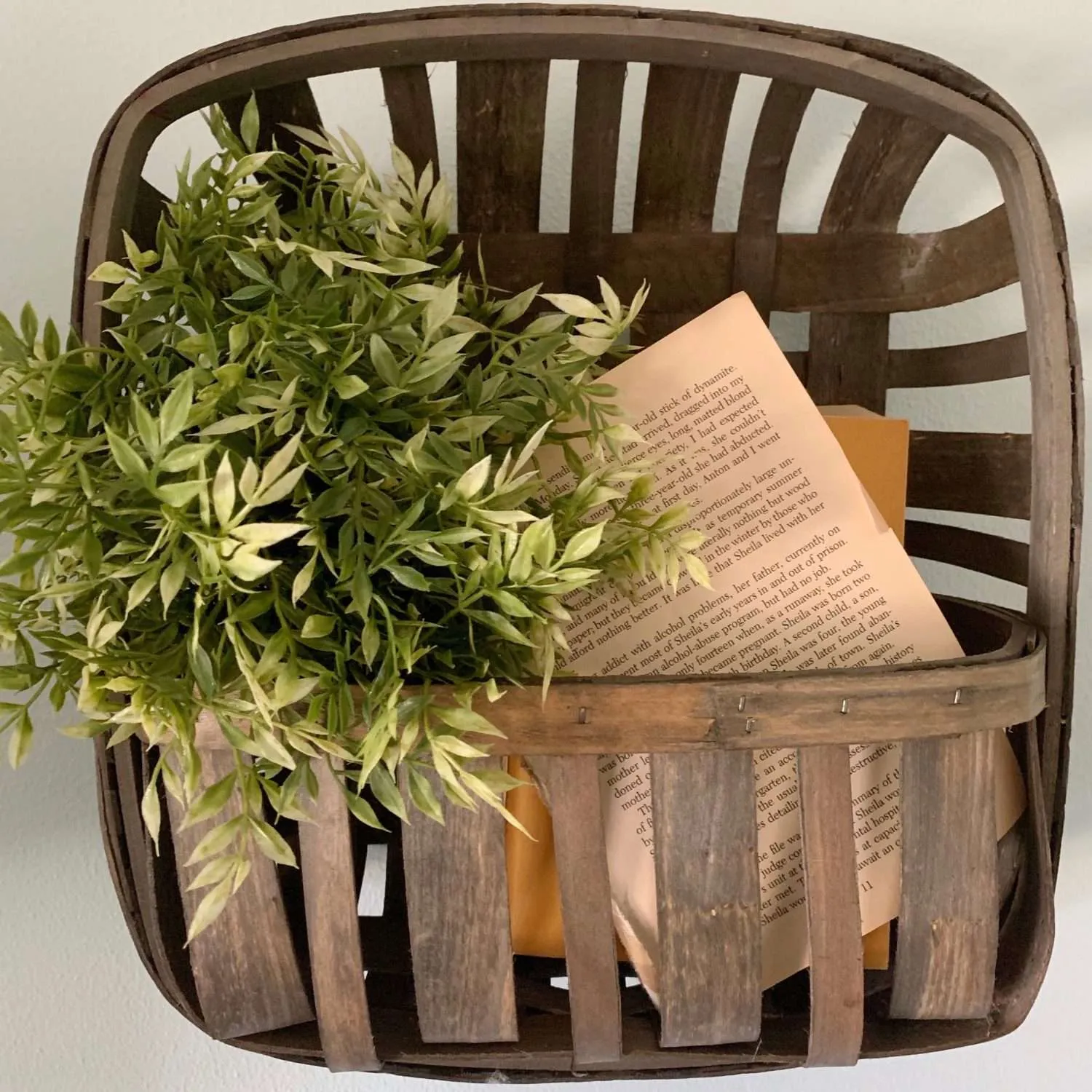

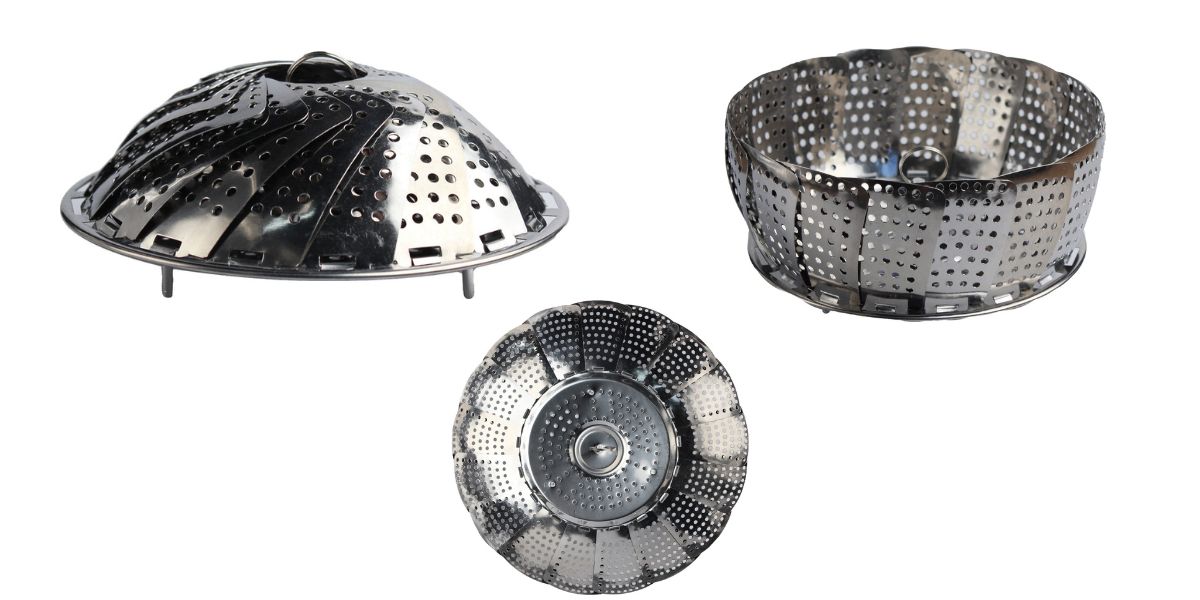
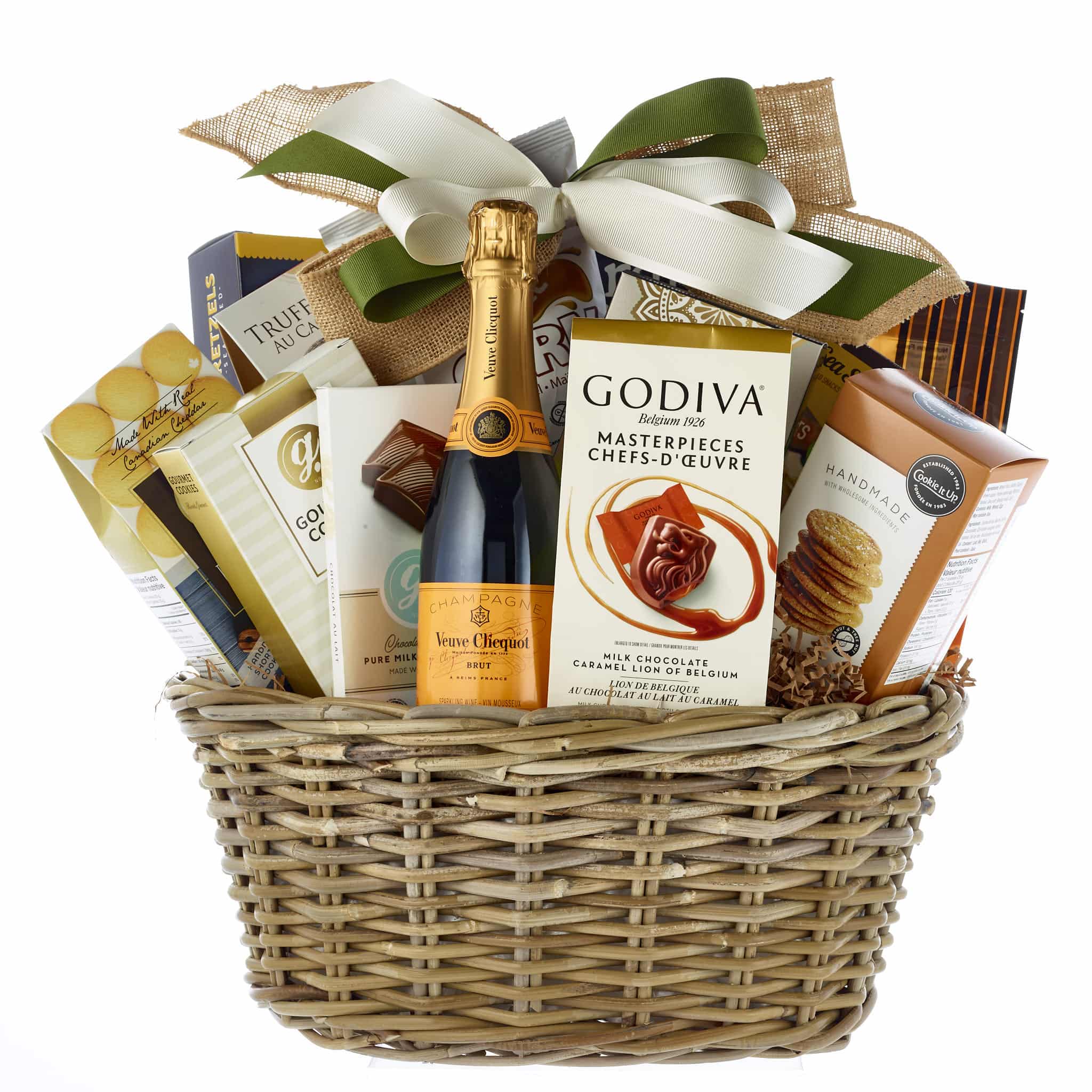
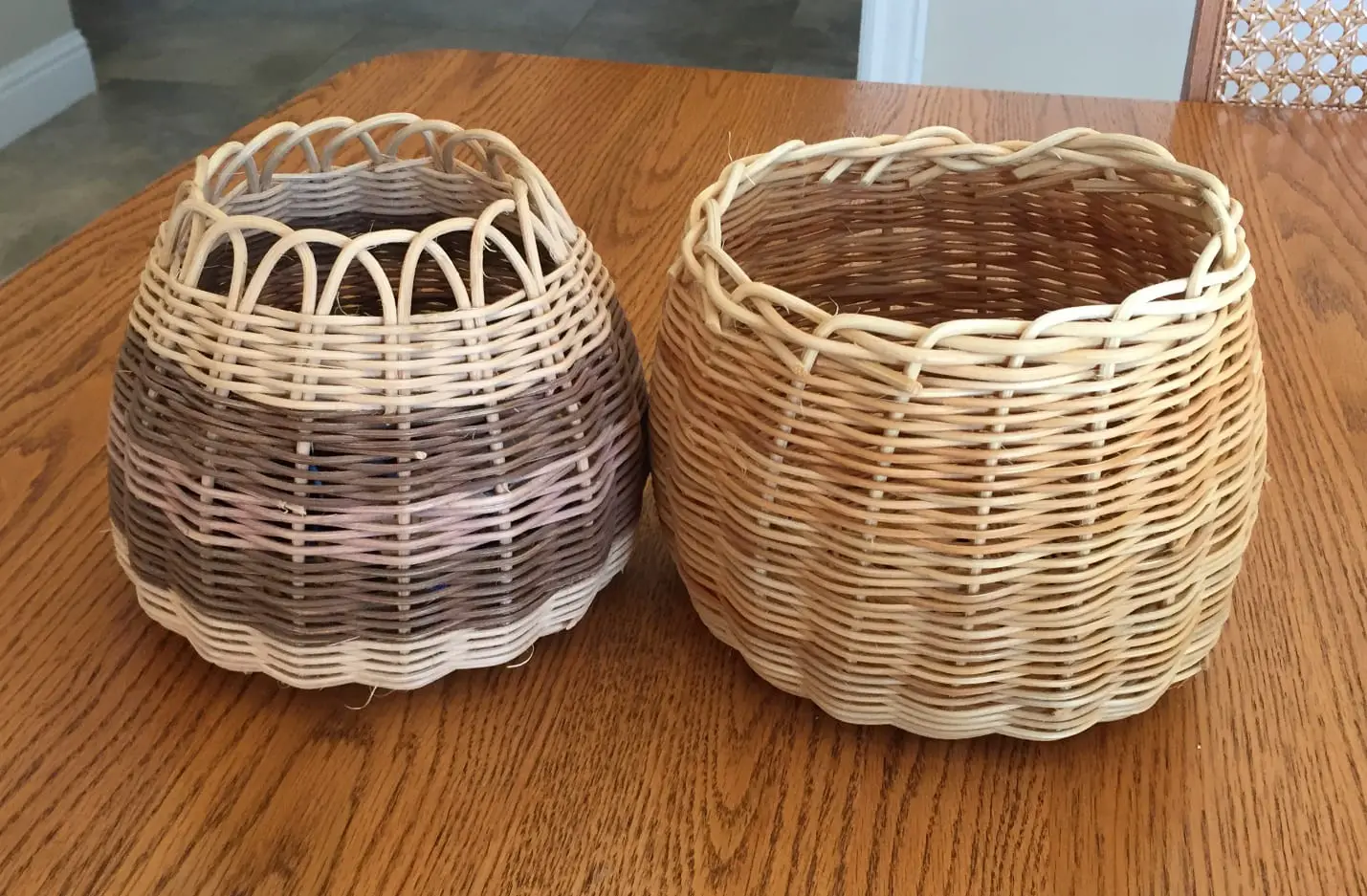
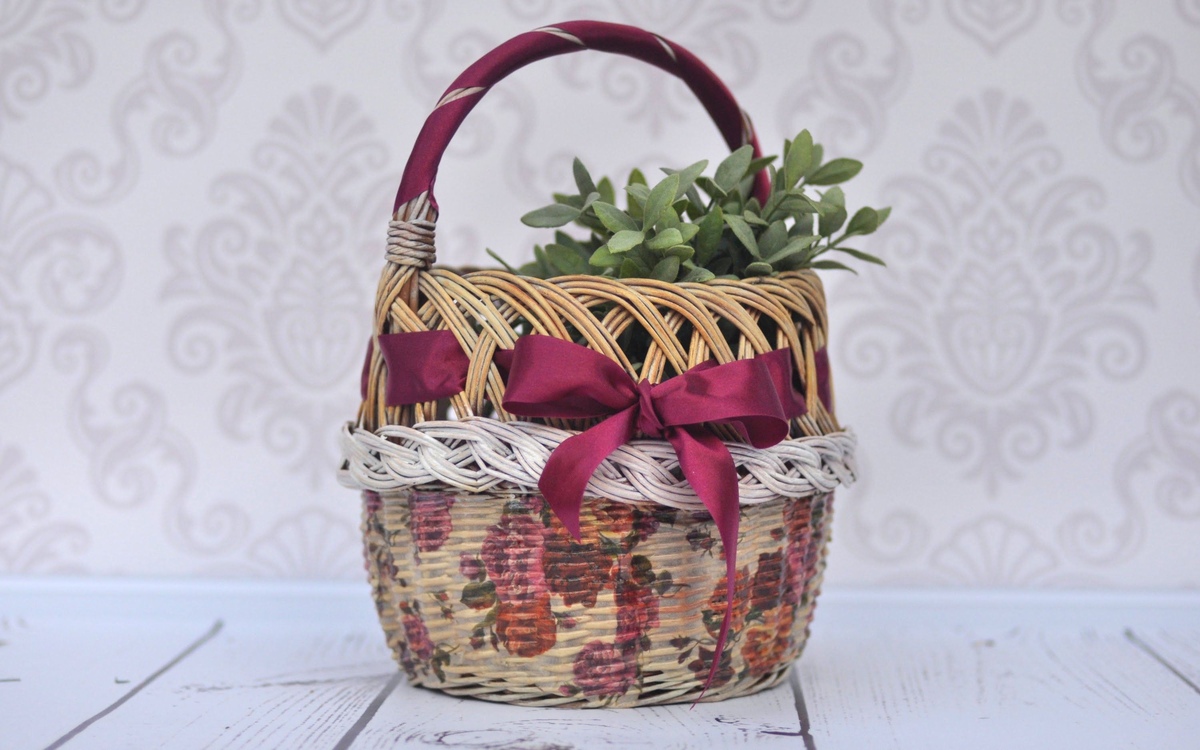
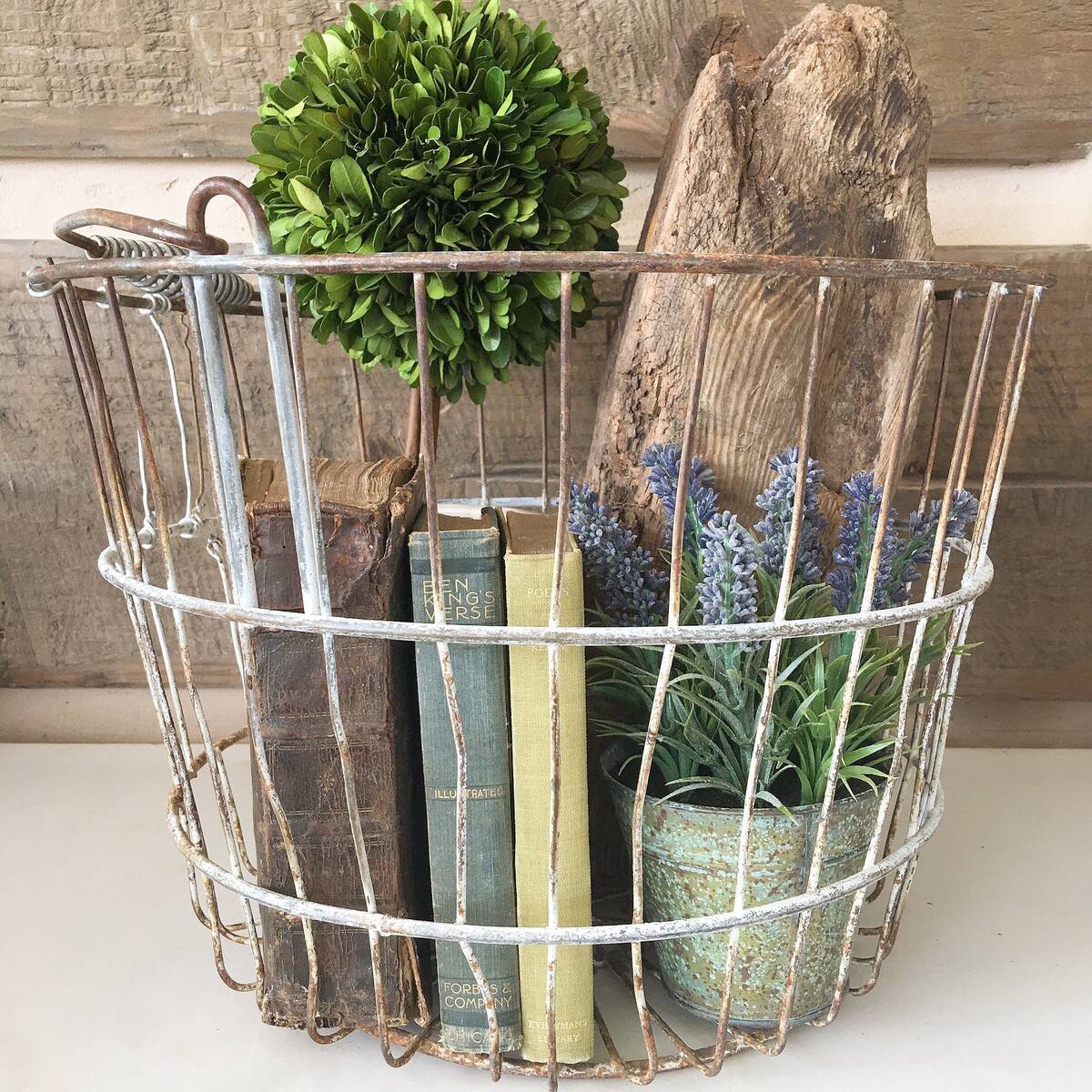
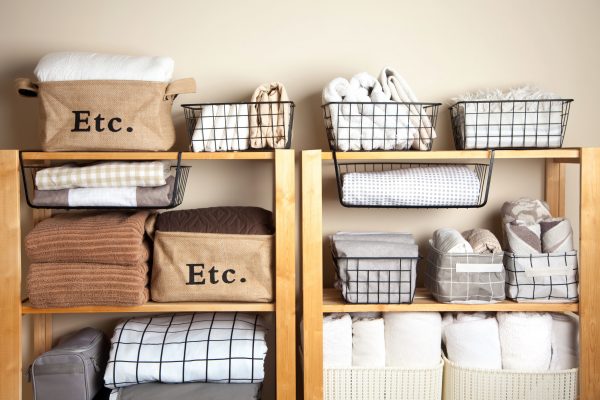

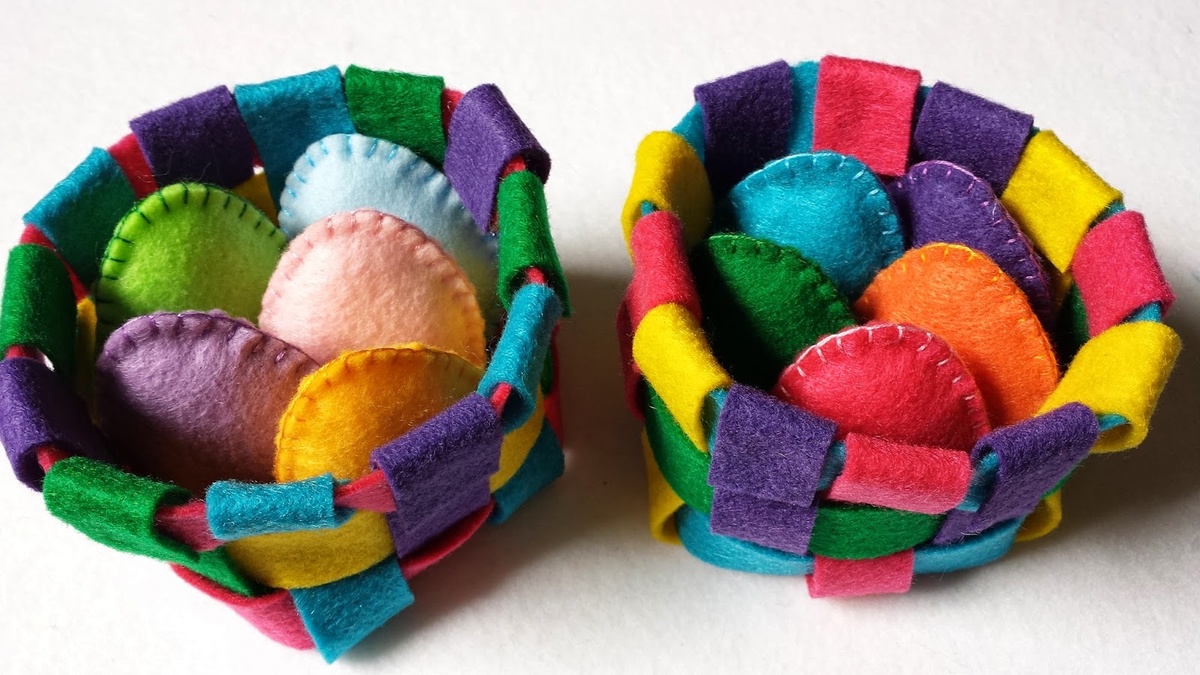
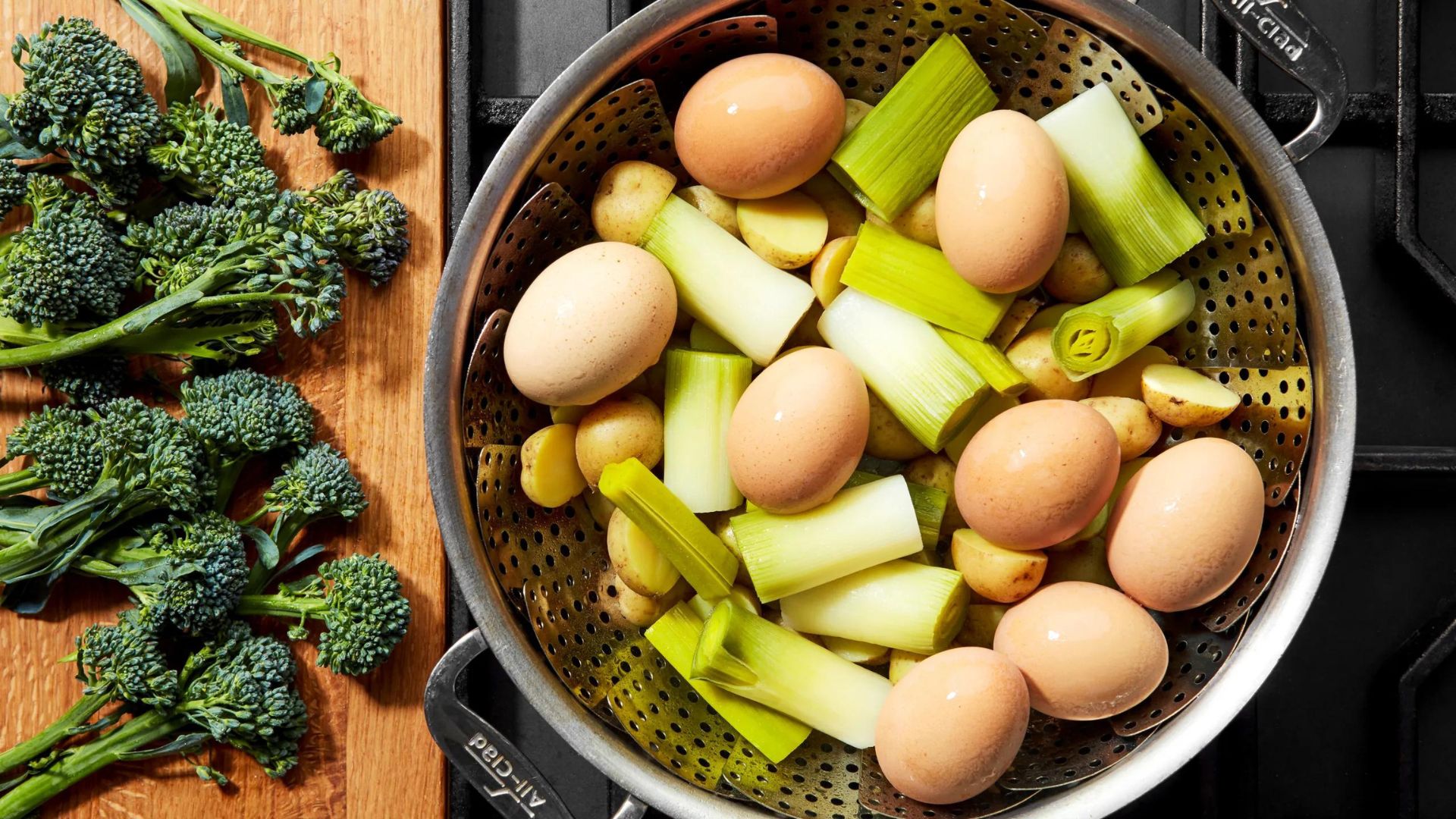

0 thoughts on “How To Store Baskets”